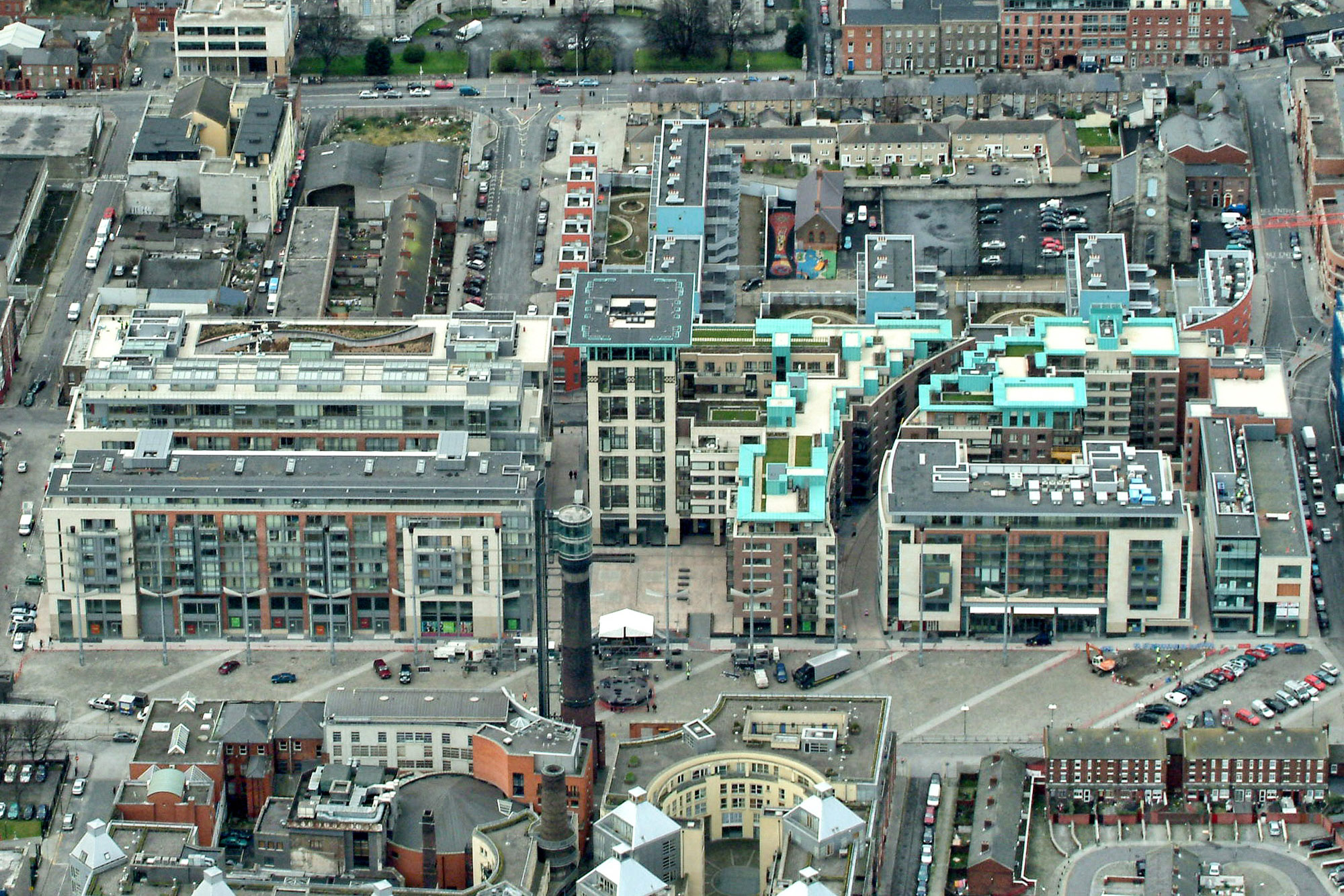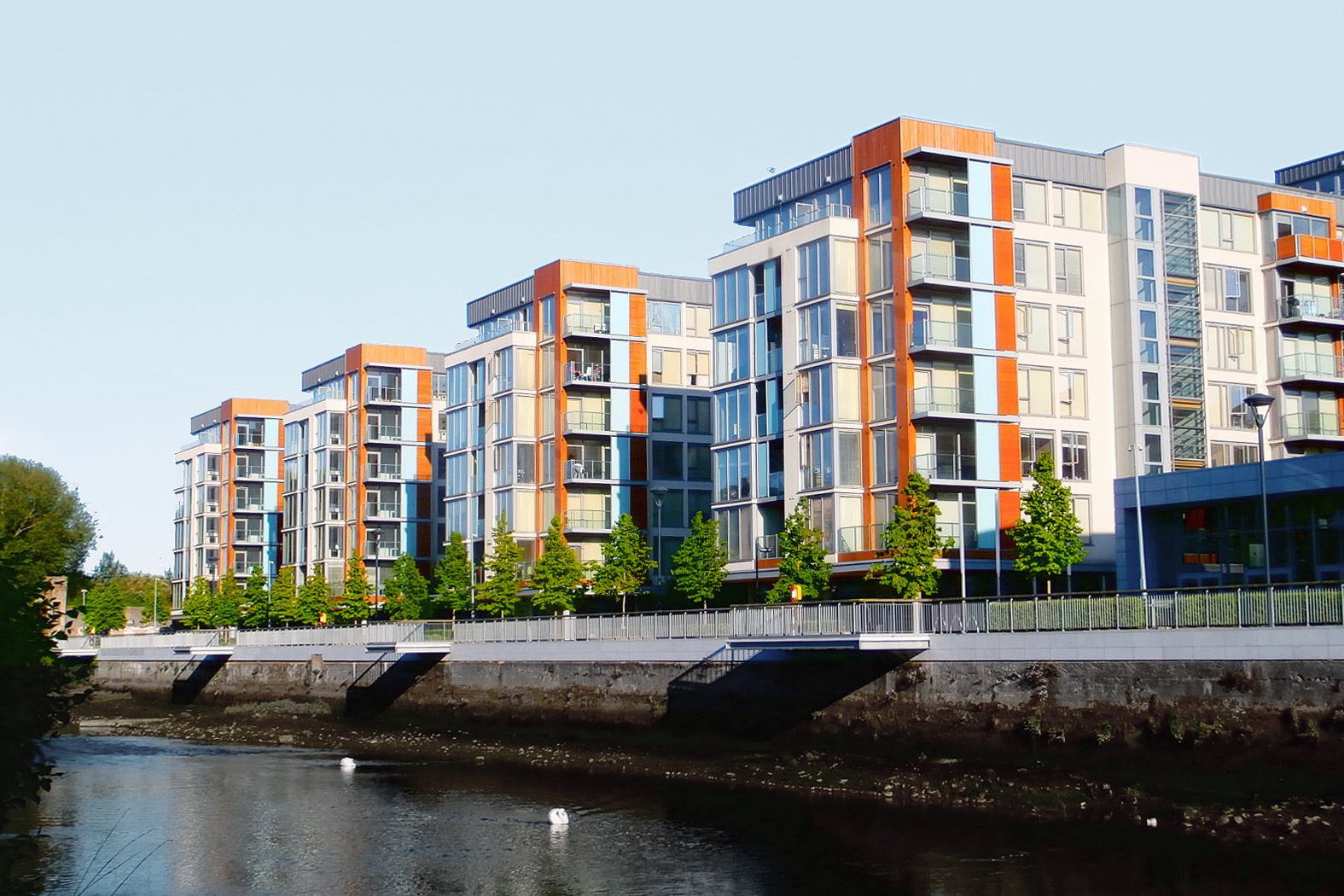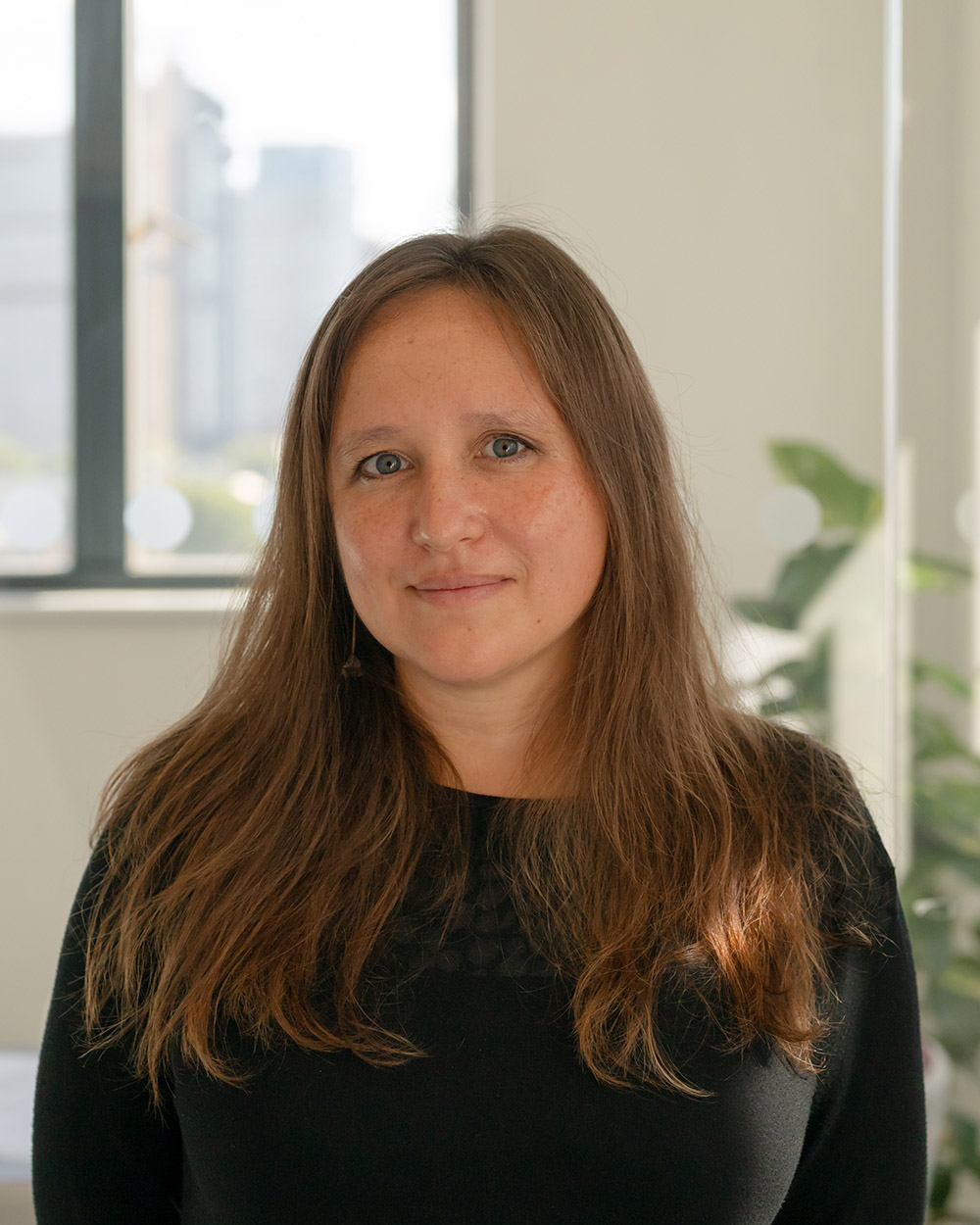
17.01.13
Case study
Smithfield Market provides 120,000m² of mixed use space and represents one of Ireland’s largest ever redevelopment projects.
The development area of 4.5 acres in Dublin 7 is bounded by Smithfield Square, North King Street, Queen Street and Haymarket and sits over three large levels of basement car parking.
The development of Smithfield Market establishes a new urban edge to the west side of Smithfield Square, and establishes a new smaller square, now named Museum Square, from which access is gained to the major elements of the scheme. A museum, exhibition space, offices, restaurants, retail, workshops, and apartments together provide a new urban quarter in this historic part of the city.


Materials of the highest quality were specified in the development and include Jura-limestone, high quality facing brick, structural glazing and copper and zinc panelling. All buildings have been carefully considered to form a new and appropriate urban grain which will continue to act as a model for urban regeneration in Dublin and represent a major catalyst for the continued regeneration of the greater Smithfield and HARP area.
The scale of the new buildings at Smithfield were carefully considered in order to provide both an appropriate urban massing with its close proximity to public transport, as well as providing a balance between the heights of the new buildings and the size of the historic market place.
The scale of the new buildings at Smithfield were carefully considered in order to provide both an appropriate urban massing with its close proximity to public transport, as well as providing a balance between the heights of the new buildings and the size of the historic market place.

Smithfield Market is located north of the river Liffey in Dublin. It was laid out in the mid 17th century as a marketplace. The rejuvenation of Smithfield commenced under the HARP (Historic Area Rejuvenation Plan) implemented by Dublin City Council. The aim of the Historic Area Rejuvenation Project (HARP) was to enhance the quality of life for residents, business and visitors around the Smithfield and Henry Street areas of Dublin. This project was initiated in 1996 when Dublin City Council prepared a framework plan involving the local community, the City Enterprise Board, An Taisce and other agencies.
The objectives of the HARP plan were:
— To encourage private development on derelict/vacant sites for residential and/or commercial uses.
— To ensure investment by promoting the area as an attractive and viable enterprise and residential location.
— To provide play facilities, upgrade open spaces and recreational facilities.
— To facilitate the provision of community facilities.
— To address the provision of training and education in the area.
— To promote and encourage the development of a tourism infrastructure.
— To promote the conservation of historic buildings.
— To upgrade the public areas and promote an urban space at Smithfield.

In order to move the HARP plan forward an architectural competition was held in 1997 by Dublin City Council to prepare a flagship project to encourage development in the area. The competition winning scheme for the landscaping of the public square forming the marketplace involved lifting more than 400,000 one hundred and twenty-year-old cobblestones and relaying them along with signature light features along one side of the square.
However the regeneration of Smithfield commenced in earnest when HKR were appointed to masterplan a mixed use development along the full length of the western edge of Smithfield. The site contained a mixture of surface car parks, car dealerships and old abandoned warehouses along with accommodation for retired soldiers, a building referred to as the ‘Old Soldiers Home’.
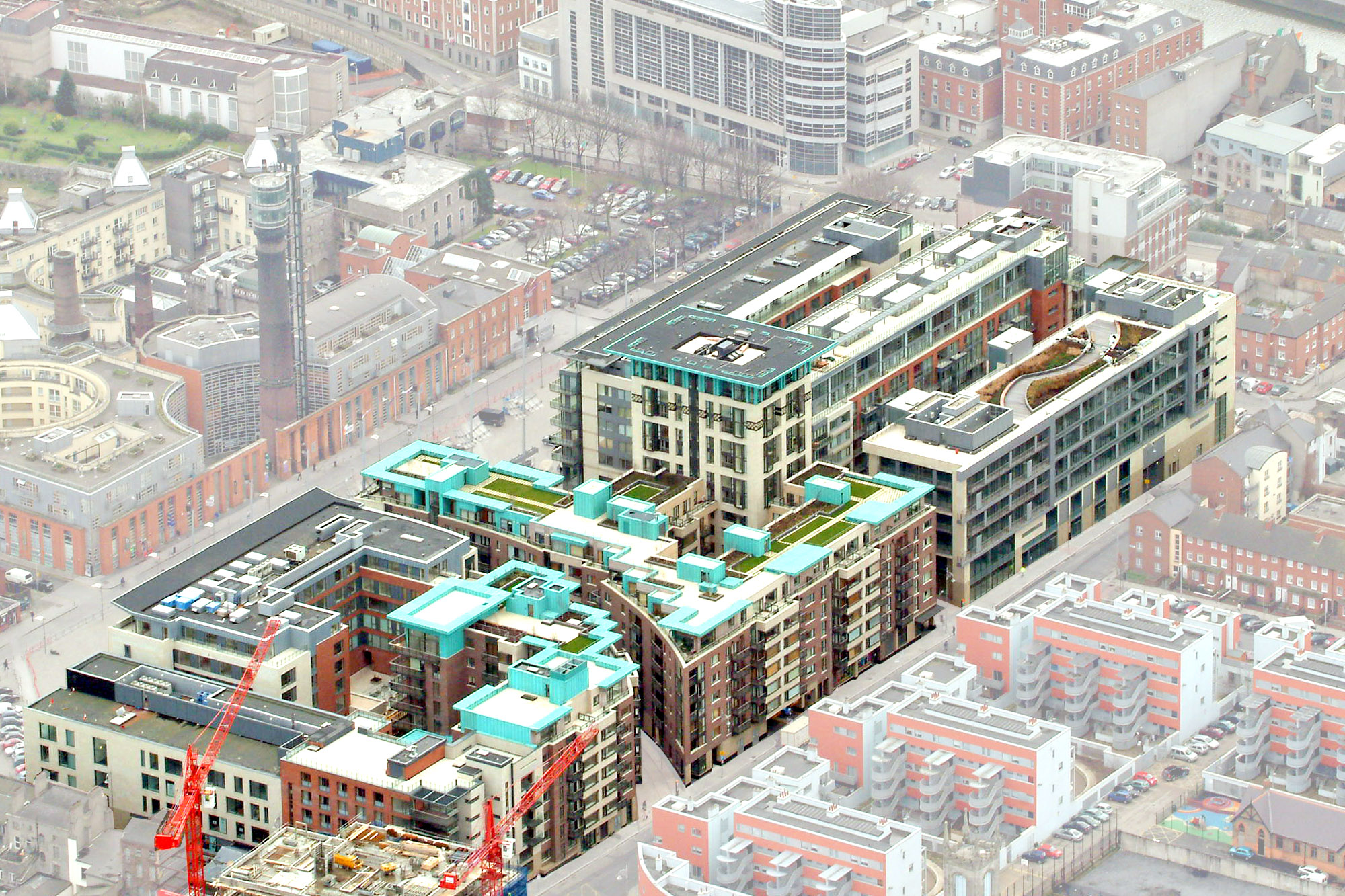

Smithfield Market provides 1.3 million sq ft of mixed use space and represents one of Ireland’s largest urban redevelopment projects.
The mixed use scheme includes:
— 7,300m2 offices
— 500 apartments
— 6,400m2 conference and exhibition facilities
— 5,295m2 retail
— 5,295m2 cultural centre and cinema
— 2,600m2 gym and leisure centre
— 1,200m2 food market and restaurants
— 93-bed hotel
— 40-bed Old Soldier’s Retirement Home
— 560m2 Medical Diagnostic Centre
— 460m2 crèche
— 900 basement car spaces

Smithfield is a major urban intervention and regenerates a complete urban block. A key design question for the project was the establishment of an appropriate massing for this area of the city centre as well as providing a balance between the heights of the new buildings and the size of the historic market place. The site formally contained low rise structures which failed to enhance the boundary of Dublin’s largest hard landscaped square.
Smithfield was envisaged to be a revitalised urban square along the route of the newly constructed light rail system running through Dublin. The square was the only major open space in Dublin and the refurbishment of the square itself by Dublin City Council envisaged its use for public events such as markets, pop concerts or other cultural events. A horse fair that that has been running for decades in the square was retained and occupies the square for the first Sunday of every month.
Smithfield is centred in the heart of the legal quarter of Dublin and a part of the city growing in importance. Future plans for the master planning of a 3rd level education campus in Grangegorman, just to the north of Smithfield, raised the importance of the city square as a nodal point for pedestrians moving north south between the campus and the Dublin light rail system (Luas), and east west between the various legal institutions or beyond to the retail areas at Henry Street.


An appropriate scale of building for the new square was chosen to help lift its profile by creating an urban block that formed a strong edge to the square and was punctured by new routes for pedestrians that are carved out of the urban block. Routes through the scheme are pedestrian and match the width of many of the existing lanes through surrounding blocks.
In creating an urban block that picks up the thread of the existing urban grain, great care was required to create a scheme that was at the same time a place to live. The apartment living in Smithfield benefited for the use of the nearby Smithfield Square but it was also necessary to provide semi public spaced shared by the residents as well as private space for each apartment in the form of balconies. The semi public space is provided by a series of roof gardens at both podium and roof levels. The roof gardens in particular provide panoramic city views and leisure spaces high above the hustle and bustle of the city below. An experience normally reserved for a select few in penthouse apartments.
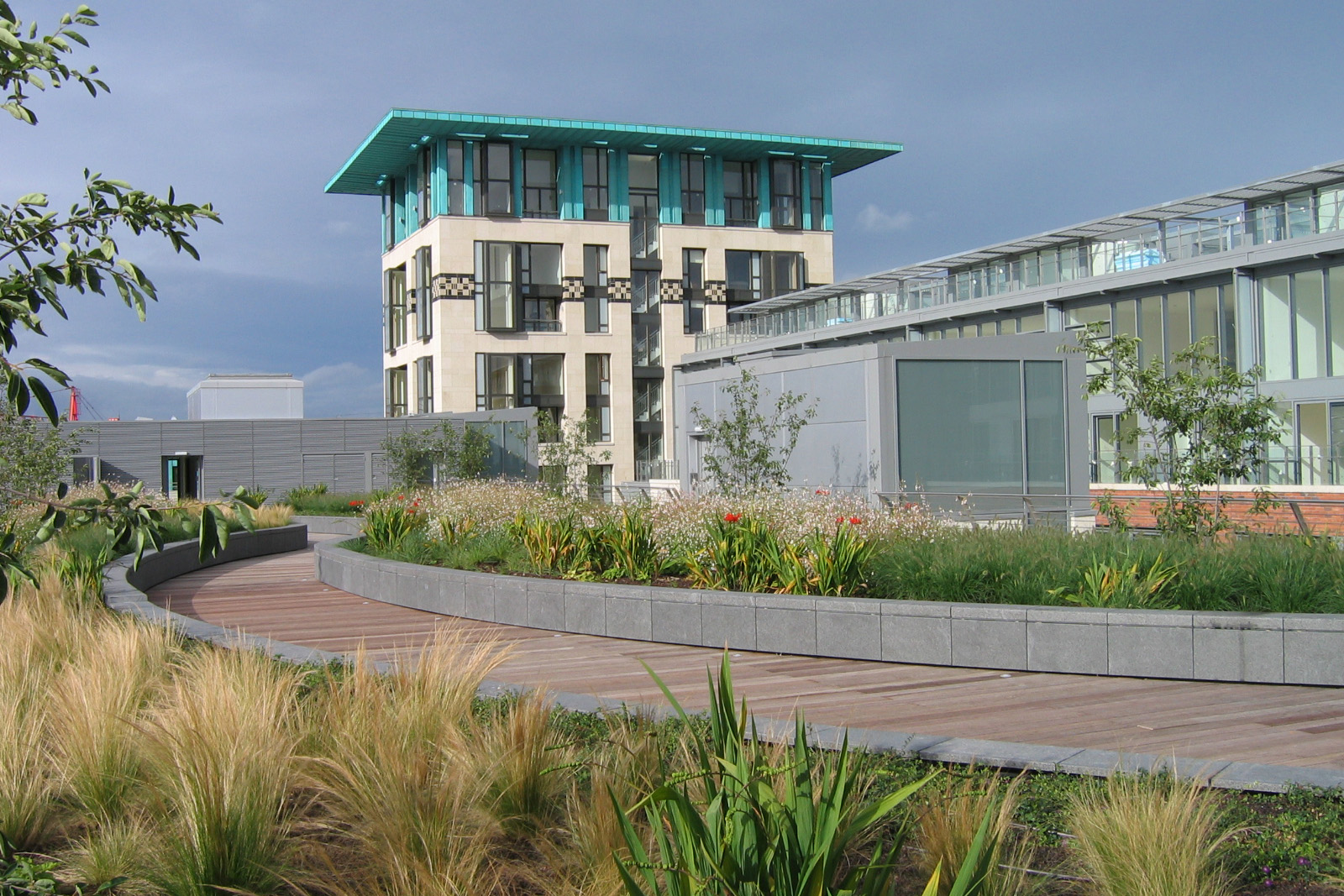
The Smithfield project was designed to provide a diverse range of uses in order to avoid the more typical monotonous single function developments that are unable to provide a 24 hour city life. The scheme provides a core of residential development supported by retail, leisure, office, medical, hotel, crèche, old soldiers home, cinema and cultural uses. The residential element of the scheme was required to provide a percentage of accommodation for social and affordable housing, all designed to the same standard.
The architectural design of the scheme offers variety without a cacophony of competing styles. This is in part achieved by the use of a limited palette of high quality materials. The materials chosen include Jura limestone, high quality facing brick, structural glazing, copper and zinc panelling. All were chosen, and detailed, to weather well and provide longevity to the scheme. A similar philosophy was applied to all the landscaping finishes used throughout the scheme.
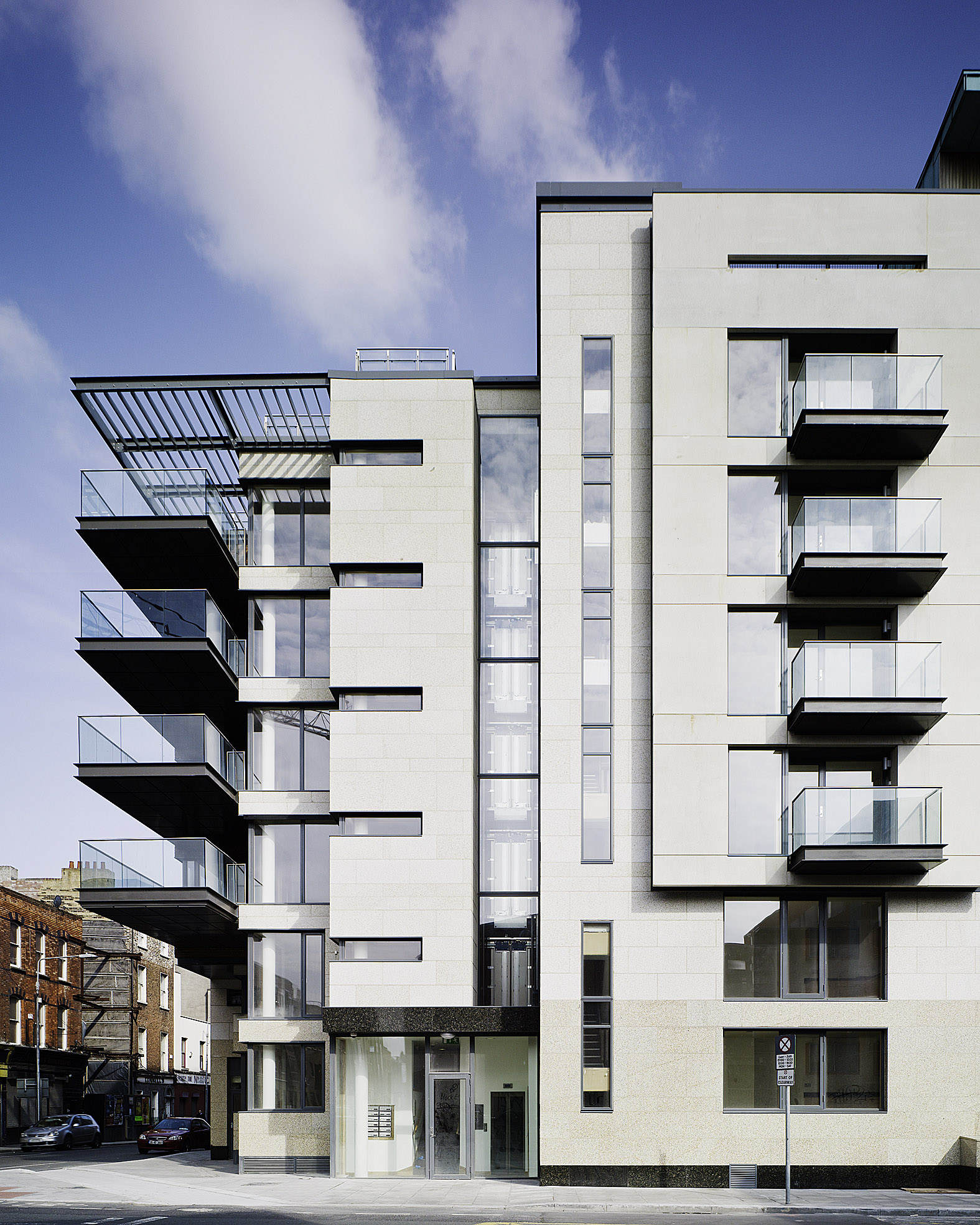
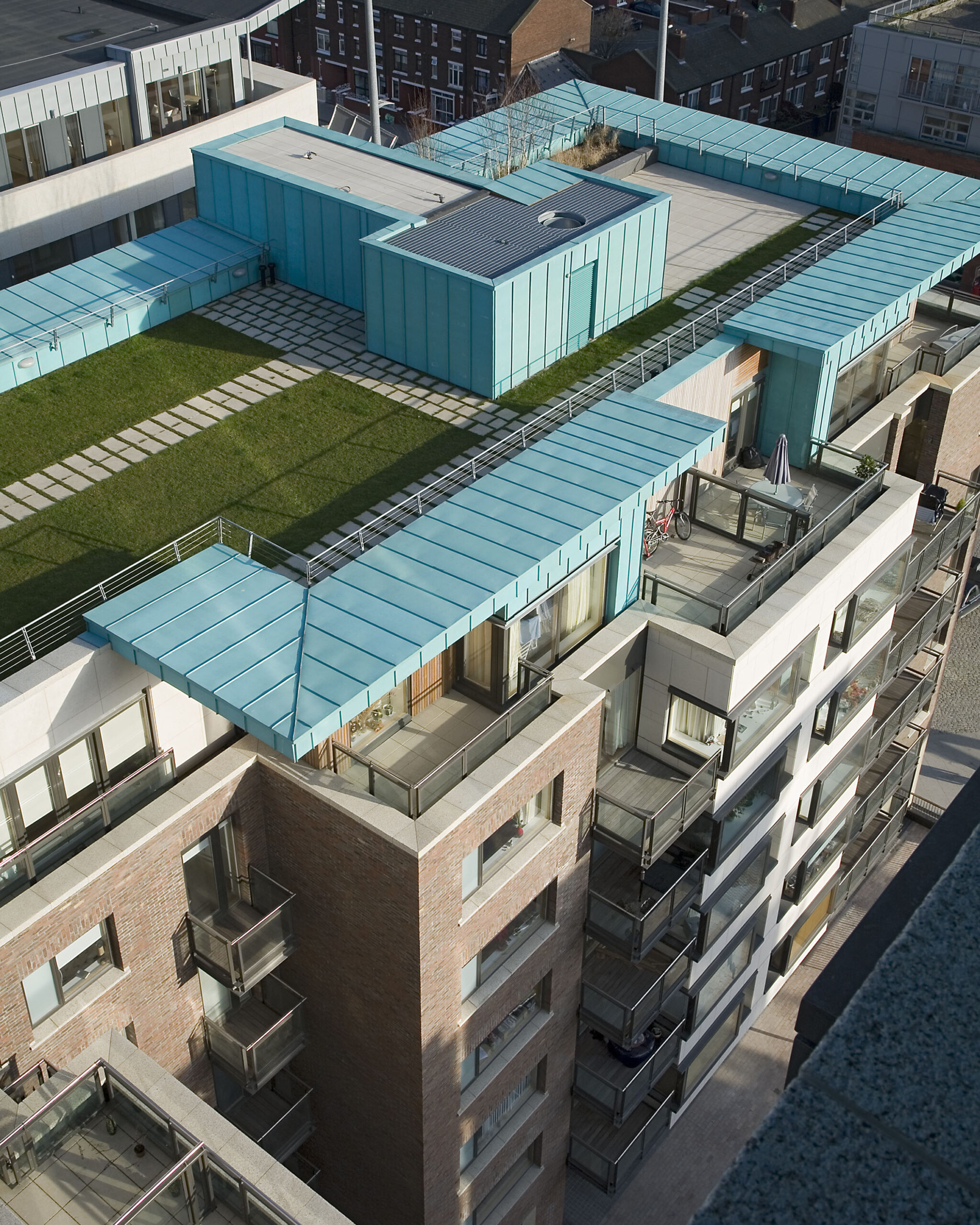
The project was constructed as a single phase by one contractor. The structure is constructed of reinforced concrete slabs and columns with blockwork used both for the inner leaf of the external walls and party walls. A number of items were constructed off site and then transported to site ready for installation on the project, these include;
— Bathroom pods
— External leaf of wall cladding
— Balconies
The introduction of these offsite elements introduced many benefits to the contractor and can be summarised as follows;
— Time savings
— Cost reductions
— Quality control
— Health and safety
— Sustainability
— Site management

Smithfield was the first major use of Modern Methods of Construction (MMC), or off site construction, by HKR. Although many of the uses and benefits of MMC remain concealed within buildings or known only to those who were involved in the construction of the building, one of the most visible aspects of this form of construction in Smithfield are the clip on balconies.
HKR developed a system of balconies that were assembled in the factory before transport to site and erection straight onto the building in their completed form. Prior to the development of this balcony typology most balconies were designed as part of the main structure with finishes, handrails and soffits all added by separate trades on site. The finished product tends to be visually heavy, with poor quality finishing due to the many interfaces of trades.
The new typology for balconies reengineered the balcony design to a simple steel frame into which light weight precast panels with glass disk floor lights were inserted. The self finished soffit also had the benefit of greatly increasing the light levels in apartments below due to the light penetrating the glass disks in the balcony floors, thereby enhancing the quality of living spaces.


The following benefits on the Smithfield were achieved by the valuing engineering of the balcony design to use MMC;
— Time savings were achieved in the erection time of the balconies and the removal of the need to erect scaffolding around the balconies during construction.
— Cost reductions were achieved in the main contractor’s preliminaries.
— Quality control of the finished balcony and apartments was far superior than traditional construction methods used at other locations
on the same site.
— Health and safety risks were reduced.
— Each balcony provided a safe working platform for the installation of the next balcony immediately above.
— Sustainability is improved through the use of less materials in the products manufacture and less waste on site.
— Site management is reduced due to the shorter construction programme and reduced time spent in getting the components handed over at the completion of the building.
— The construction of the 4.5 acre development was completed in 2005 and its impact was immediate. A decayed and scarred part of the city had been repaired and revitalised allowing new residents and businesses to move to Smithfield and contribute to its continuing richness of diversity.
